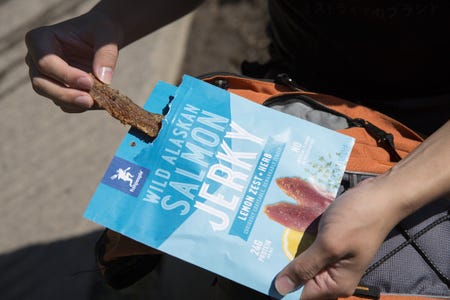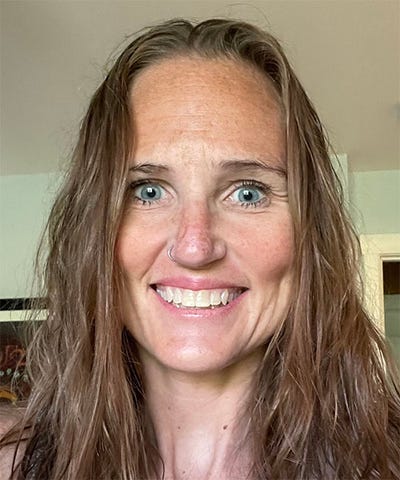February 28, 2019

Fishpeople co-founders Kipp Baratoff and Duncan Berry readily admit that we humans haven’t been the best at treating our oceans with respect; some 90 percent of the large fish are gone. In their own words, “The world doesn’t need another seafood company, it needs a radically different one.” Thus in 2012 was born Fishpeople, the Portland, Oregon, company on a mission to “reimagine consumers’ relationship to the sea,” focused on “the where, what and how of the harvest so that it is sustainable for future generations.”
Six years later, that mission hasn’t changed. “We’re still here trying to create the “right” kind of demand for seafood, which is a demand that will make our consumers and our rural communities and oceans healthier, and that’s really the heart of what we do,” shares Baratoff, who serves as vice president of operations for the company, while Berry heads up innovation. New Hope Network caught up with both leaders and Vice President of Marketing Jen Paragallo to learn more about the brand.
How does your business promote sustainable fishing?
Kipp Baratoff: The short version: We have nine sourcing principles for a fishery to be included in our portfolio. Screening relates to our adherence process to ensure that stocks are healthy, there’s limited by-catch, you’re not destroying habitat, etc.
What makes Fishpeople unique?
Duncan Berry: We’ve been an industry really stuck in many ways back in the ’50s. We have not innovated like other proteins. Consumers are looking at seafood as cheap and not honoring it for what it is, so one of the ways in which we’re different is we do. We’re saying this is the premium protein on the planet, and it should be put into meals and used in such a way that highlights and builds on that. That’s one of the primary ways we’re different from the Goliaths that dominate the seafood industry.
Every Fishpeople product has a Trace Your Fish code to promote 100 percent transparency. What’s been the customer response, and does it influence retailer purchase decision?
Jen Paragallo: We get great website traffic from the tracking codes. I think retailers especially love it because we do the tracking code as a shortcut to trust. Even if you’re not going to take the time to type it in, the fact that a brand is printing this code on every single one of its packages helps consumers trust that brand.
How and where did you launch your first product?
DB: We started out wanting to do value-added number one: we had four primary soups, all of them premium. We didn’t want to put our toe in fresh because of the losses in the industry around spoilage, so we turned to what we thought was a 21st century technology, which is retorting … putting raw ingredients in a bag, sealing them and then pressure cooking them basically. We believed people would be very interested in alternatives to the can at the time.
 We started out in farmer’s markets just wanting to field test a bunch of things, but we very swiftly moved to what we call the ‘beacon retailers,’ which is a fairly typical path for natural. We launched on the West Coast [in New Seasons] and then slowly expanded … we moved into Whole Foods and started getting into the national players. I think more rapidly than most, we jumped into conventional quite quickly because they’d heard about us, really loved our packaging and the traceability piece, and they asked us to highlight that.
We started out in farmer’s markets just wanting to field test a bunch of things, but we very swiftly moved to what we call the ‘beacon retailers,’ which is a fairly typical path for natural. We launched on the West Coast [in New Seasons] and then slowly expanded … we moved into Whole Foods and started getting into the national players. I think more rapidly than most, we jumped into conventional quite quickly because they’d heard about us, really loved our packaging and the traceability piece, and they asked us to highlight that.
JP: We also sell online on Amazon, Thrive Market and direct from our own website.
What drives your line extensions?
JP: When I first joined Fishpeople, most of the innovation was driven from the supply side versus it being consumer-led. That’s where our meal kit came from: consumers saying, ‘I want to eat better wild-caught seafood; I want it to be at an affordable price point; I want to cook it right every time.’ So we came out with a [$9.99 two-serving meal] kit that has moisture-locking foil, with step-by-step instructions and a chef-crafted topper. It is so easy, it is foolproof.
Then we moved to jerky and our Ready, Set, Salmon. Jerky is crowded, but higher-end proteins are what’s driving the growth. There’s very little great-tasting seafood jerky out there, and I think retailers have been excited about the incremental quality we bring to this category by bringing in a new consumer who’s looking to live a little lighter. And the genesis of Ready, Set, Salmon was incredible: great-tasting, oven-roasted wild Alaskan salmon that’s as easy as opening the pouch.
Can you share a bit about price sensitivity and value proposition?
KB: Industry has not done a good job helping the consumer understand fish is more expensive than chicken and beef, and it’s healthier. As a result, that’s where price sensitivity comes: they’re comparing it and they’re not used to seeing a high-value, quality marine protein source that they can get for anything other than $2. It’s frustrating, because the industry has gotten in its own way of serving the consumer properly, and then we don’t give them the quality that they deserve or the actual experience they deserve.
JP: We’re a B Corp, which we take credit for on our packaging, and consumers value that. They value the purity of the ingredients.
What are the current trends in the seafood category and how do you align with them?
JP: Everybody’s trying to make it simpler. This is an incredibly nutrient-dense protein but it’s hard for the average person. A lot of people are using the term ‘sustainability’ now and it’s not a regulated term, so I think brands like us that go the extra mile with regard to clarifying to consumers what it means to be sustainable—helping them dive deeper into the story behind their fish—are the ones that are going to rise to the top with regard to authenticity.
KB: We need to colonize the grocery store: seafood all over the place, not just one place in the store. Because grocers don’t have any power SKUs in seafood unless it’s behind the glass, we’re going to not only give you everything for every usage occasion, but we’re going to find you everywhere you go in the store, so that we can have a breadth of products that not only builds brand, but does the best for teaching and engaging the consumer.
What are your biggest supply chain issues?
DB: We are 100 percent American, 100 percent wild caught. One of the greatest challenges is we are hunter-gathers; biology is always throwing us curveballs. I think also for us is just back to the fact that the industry is really stuck in many ways in operationally driven legacy companies. From that very first product launch, we built it backwards to that. We asked, ‘What’s important to consumers?’ literally at the plate level, and then we built the supply chain backwards.
We also want to tell the story … four generations of industrial food can’t wipe out this yearning that we have for connecting deeply with the context of our food, and this brings me to the other big piece … there’s a trust issue from the consumer to the seafood industry, a huge trust issue. We’re in the business of truth; we’re giving a farmers market intimacy at a scale across the entire country.
What’s one thing that’s surprised you in running this company?
DB: It’s a very difficult industry. It’s impossible to start from your garage and have this instant success story because of the complexity of this wild hunting-gathering interface, and the fact that there are boats involved and the sea and weather and all these different things. So that’s one piece. The other piece that I really love about how we’ve responded to this complexity is that we are a very purposeful company. This is food, so we should also be playful. You look at our logo and it really communicates that. Even in the most difficult times, there’s a lot of laughter at our headquarters. We try to keep it light so that the love, happiness and lightness goes into our food.
About the Author
You May Also Like
.png?width=700&auto=webp&quality=80&disable=upscale)





